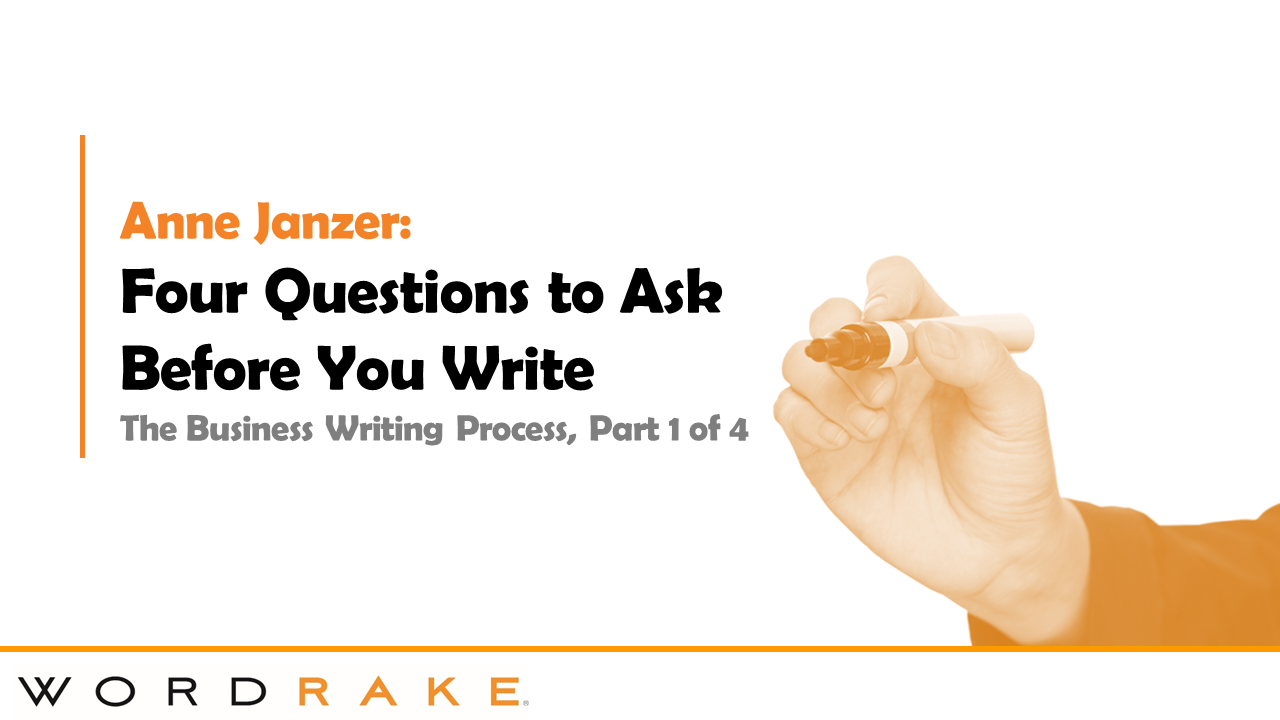An idea for a new project comes to you when you’re in the shower. Or you’re on the way home from work when you think of the perfect words to convince your executive team to fund your initiative.
Breakthrough insights and inspired ideas often appear when we’re far from our desks.
That’s no accident. It’s an artifact of the way that our brains work. In this post, we’ll look at how you can set up your brain to generate insights when you’re doing other things. (It’s like crowdsourcing within your own head. More on that below.)
Before you object: creativity isn’t just for fiction writers. All writing is creative—even legal briefs, business emails, and more. Creativity shows up as a great metaphor, a memorable turn of phrase, or the best way to approach a reluctant prospect. It makes all writing more fun and fluid.
The mental processes involved with creativity and inspiration may seem like they are beyond our conscious control. Yet you can create the right environment for incubation and set those processes to work on specific projects. When you do, good ideas come your way more often, and your productivity increases. Writing becomes easier.
Here’s how to add more creativity to your writing process.
Use the Incubation Effect
Creative thought processes simmer in the background, in associative thinking that connects different regions of our brains. These thoughts typically surface when our attention is not laser-focused on something else. Psychologists refer to this unseen creative boost as the incubation effect.
Using incubation is like crowdsourcing your writing project to your subconscious mental processes. There’s a whole Internet worth of ideas rambling around in your brain.
Once you figure out the magic of incubation, you can apply it to nearly any writing task, whether it’s a blog post, a project proposal, or the chapter of that book you’re working on.
To make use of the incubation effect, plan for its three phases:
- Priming the incubation process
- Incubating (the fun part!)
- Working with the results
Priming the Incubation Process
When you crowdsource a project, you first define the project and enlist the crowd. The same is true with incubating. Your mental processes need something to work with.
Do this by working on the project. A little struggle jump-starts incubation.
First, focus on your objectives. Did you answer the four questions for this project? (See my previous post “Four Questions to Ask Before You Write.”) Start by identifying the reader, their reasons for reading, your own objectives, and any other stakeholders.
Explore what you know (and don’t know) about this topic. What do your readers know, and what should they know? If the project requires research, do it now.
Survey your existing knowledge and bump into its boundaries. Do this in whatever way feels comfortable:
- Take notes or write in a journal (paper or online)
- Talk about the topic with a colleague or make a voice recording
- Draw on a whiteboard or paper
If this work feels uncomfortable or difficult, embrace it. You’re giving the inner mental processes a lot to work with.
Start this work as soon as you get a new writing assignment or idea you want to pursue, so you can maximize your incubation time.
Note: Incubation isn’t the same as procrastination.
When you procrastinate, you put off beginning a project.
When you incubate, you start right away, then wait to write.
Next, incubate!
Studies show that creative incubation yields the best results when you interrupt your hard work to do something entirely different. The ideal environment for incubation is anything that lets your mind wander.
We have many opportunities for mind-wandering in our day:
Walking the dog
Doing the dishes
Taking a shower
If you’re working from home, you might mix periods of open, unfocused attention into your workday. (No one can see, right? They’ll just be pleased with your productivity and creativity.)
In the office, though, we’re conditioned to “look busy” for others. Find ways to add periods of mind wandering.
- Try slipping out for a walk. (If people think you’re slacking, point them to this research from Stanford about walking and creativity.)
- Take advantage of your commute. The route is familiar, leaving you a few mental cycles to gently ponder your writing project.
- Find a “mindless” task that needs your attention, so you can at least look busy while your mind wanders. Go get a coffee. Clean the break room.
Our brains also make unexpected connections during REM sleep. So, don’t try to cram a project into one day. Having at least one night’s sleep builds incubation time into the schedule. Then, get enough sleep.
Build on the Results
Now it’s time to check in with the crowdsourcing platform (your brain) and see what it’s come up with.
Sometimes, the ideas arrive while your mind is wandering. And yes, it’s often at inconvenient times. (Keep a notepad by your bed for those 5am flashes of insight, or use your phone to make a voice memo while walking.)
Often, though, it may seem like nothing brilliant happened. That doesn’t mean that incubation failed you.
Sit down and work on the project again. Return to the work you did before incubating. Do you have new ideas? Do words flow more freely now?
If the words come easily, catch them in an early draft or notes. You’ll be ready to write. And your writing process may be faster and easier than you expected. Capture those words right away, even if you don’t plan to commit to completing the project yet.
In the next post, we’ll go through taking those raw ideas into a polished draft. For now, experiment with incubating. What’s your next writing project? Prime the process, then take a day or two to let it incubate in the background. See what happens. When it works, it feels like magic.
Curious about Creativity?
Check out the book Creativity: Flow and the Psychology of Discovery and Invention by Mihaly Csikszentmihalyi.
About Anne Janzer
Anne Janzer is an enthusiastic WordRake user, an award-winning author, armchair cognitive science geek, nonfiction author coach, marketing practitioner, and blogger. She’s on a mission to help people spread important ideas through writing. As a professional writer, she has worked with more than one hundred technology companies, writing in the voice of countless brands and corporate executives. Her books include 33 Ways Not to Screw Up Your Business Emails, Writing to Be Understood, and Subscription Marketing. They have been published in Japanese, Korean, and Russian and are used in college writing courses.Find her blogs and review of WordRake on AnneJanzer.com.
Series on the Business Writing Process
This is part 2 of the four-part series The Business Writing Process by award-winning author Anne Janzer. WordRake reduces editing time, so you can polish your current masterpiece and spend more time maximizing creativity on the next one. Save yourself time and energy as WordRake automatically picks out unnecessary words and condenses wordiness into precise word choice. Try WordRake today to see how quickly it works and how it can help make your writing process faster! WordRake editing software is available for Microsoft Word and Outlook on Windows or for Microsoft Word only on Mac. You can try it free for 7 days.










